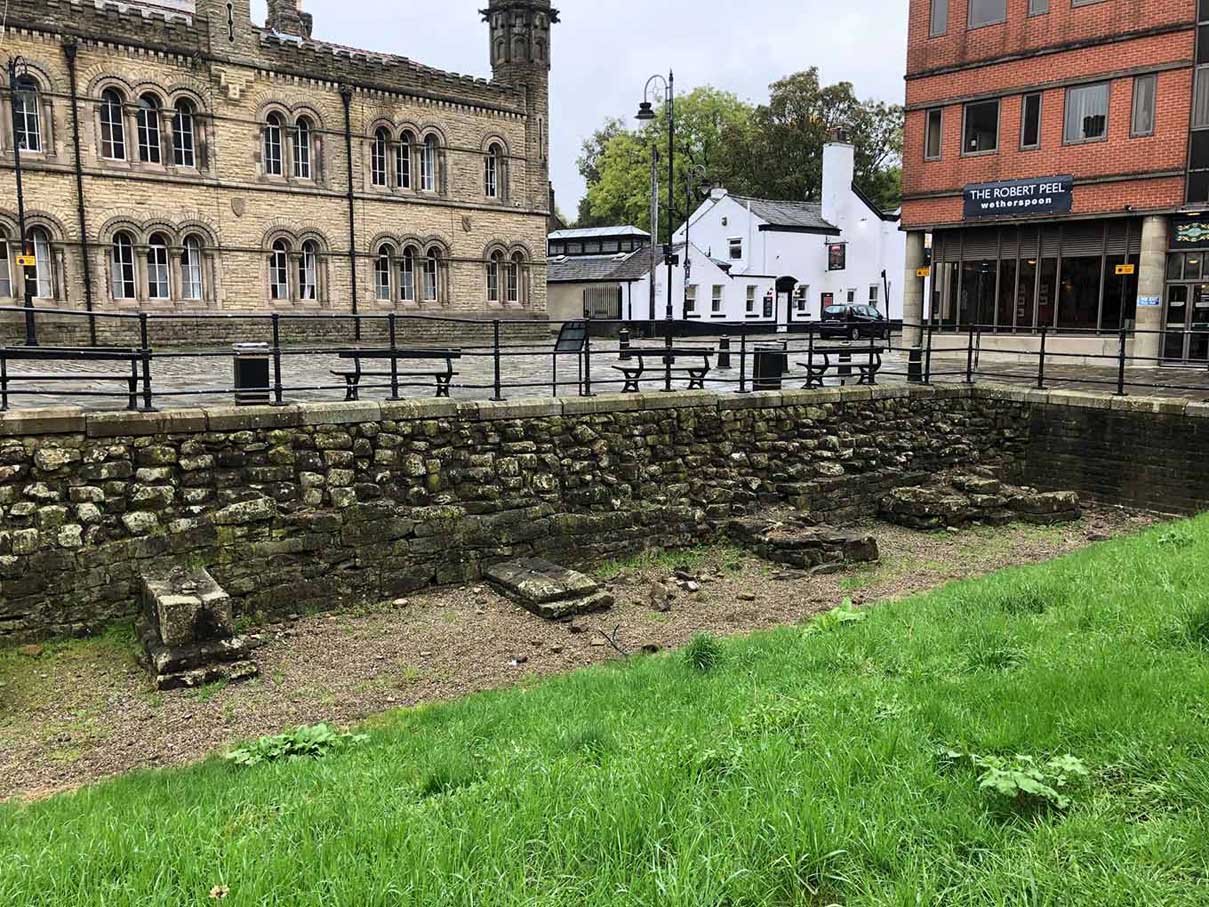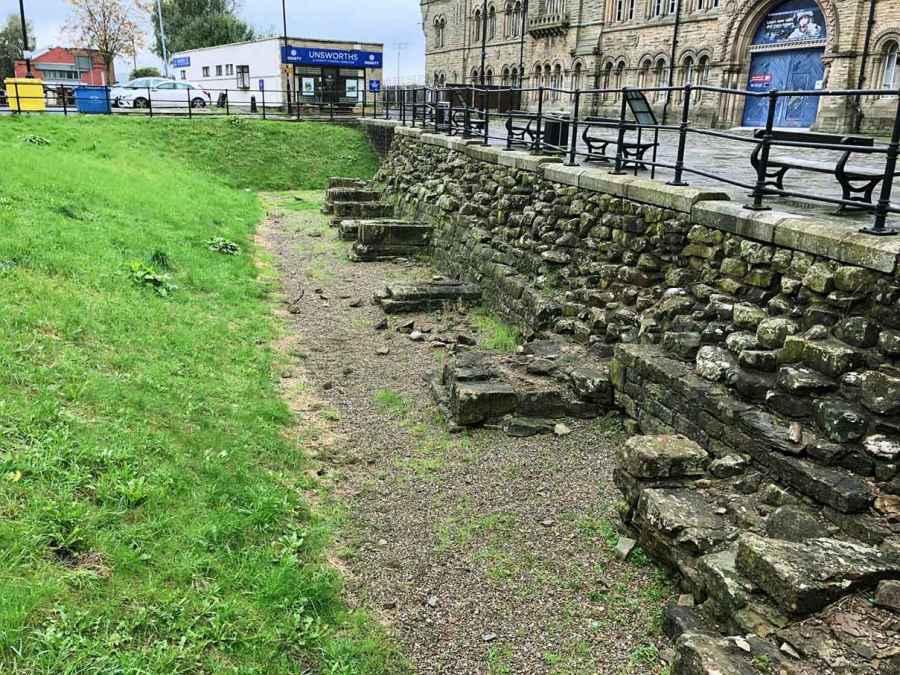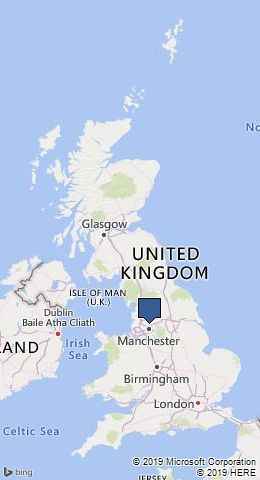
Bury Castle Buttresses by JRL
Bury Castle
The site of the fortified manor house known as Bury Castle, begun in 1469 by Sir Thomas Pilkington, lord of the manor of Bury.
Bury castle lay in a position of natural strength, on high ground, above the valley of the River Irwell. It consisted of a great “tower house”, surrounded by a moat. The inner face of the moat was lined with a stone wall, strengthened with buttresses. Part of the buttressed wall and former moat is now visible in front of the presend-day Drill Hall. The outline of the moat wall and the foundations of the tower house’ have been marked out in the modern pavement.
Thomas Pilkington fought on the losing Yorkist side in the Wars of the Roses, after which his estates were confiscated and in 1489 the Manor of Bury was given to Lord Stanley, the Earl of Derby
The Earl of Derby was not resident in Bury and, consequently, over the following centuries, the disused castle was dismantled, and the moat filled in, so that the remains eventually became buried.
The castle was rediscovered in 1865 during excavations for drainage works but remained buried. Shortly after, the Drill Hall was built over a corner of the castle remains.
Modern archaeological excavations were carried out on the castle site in 1973-77, and in 1999 when the surviving, visible remains were restored.
In the reign of Henry VIII. Leland writes:
“Byri on Irwell water, but a poor market. There is a ruin of a castle by the parish church in the town it longed with the town some time to the Pilkingtons now to the Earl of Derby”.
Created: 17 October 2019 Edited: 29 November 2023

Bury Castle
Bury Castle LiDAR Map
Contains public sector information licensed under the Open Government Licence v3.0
Local History around Bury Castle
There are some historic monuments around including:
Radcliffe Tower and site of hall 100m south west of the parish church in RadcliffePromontory fort called Castlesteads on the east bank of the Irwell 550m SSE of Banks FarmMedieval moated site and later fortified manor house known as Bury Castle 100m west of the parish churchRingley Old Bridge.



